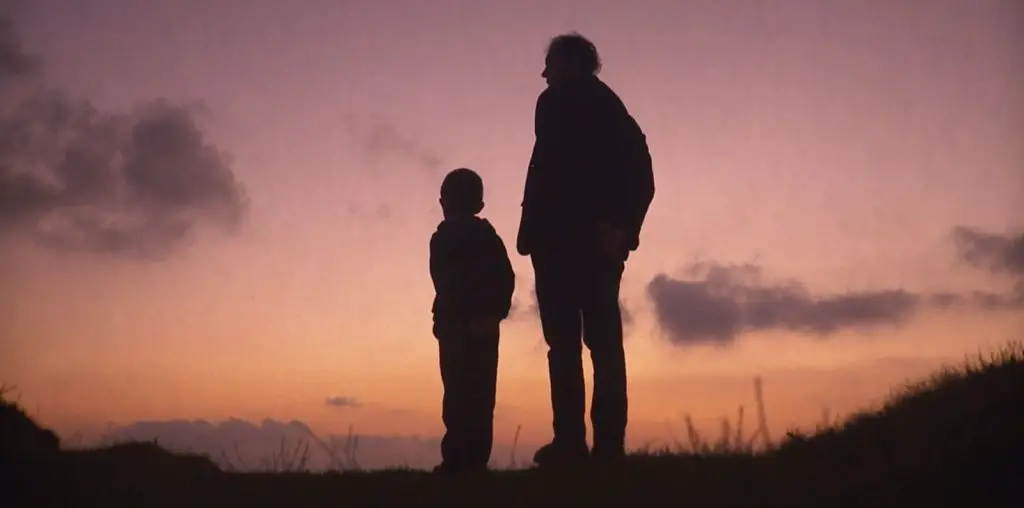
Imagine shuffling a deck of cards. Uniform suits separate into different combinations, and order is only possible by coincidence. But within the deck, there are changes. Two cards disappear and you never realize they’re gone until you go through the shuffled deck. Three other cards appear bent at the middle. At this point, you don’t care about the cards being properly shuffled. You want to know where those missing cards went, and how the bent cards became that way when you were just handling them as one normally would when shuffling.
That’s one way to think of Hoyle (Kipleigh Brown), the trenchcoat-wearing, full flask-carrying private detective, living completely inward. She lives alone with her cat Schroedinger, though she seems to spend more time at her office. And of course, there’s a case to tackle in what should be a highly celebrated return of black-and-white film noir. It begins with Hoyle, her mustachioed and low-voiced detective associate (Mik Scriba), and two strong extras busting into a warehouse and shining flashlights all over the place. Soon, Hoyle and the detective come upon a dead body (Peter Mayhew, known forever as Chewbacca, looking more like Steven Wright in that shot) with diplomatic papers, and while the detective looks over the body, he orders his two men to “check for exits.” Hoyle tells him that there are none and he responds with a gruff “Excuse me?” and she explains that she’s been there before, in that alley. She doesn’t know how, doesn’t know when, and that becomes perhaps the biggest mystery of the entire film.
There is a past to Hoyle, one difficult to imagine at first, being that everything we see of her at the start seems to be all that there is, at least on the surface. But the clues build for us, and at the same time, have us questioning more than just the clues. We hear complex scientific theories, and while they’re explained clearly enough to take in the crux of each one, it’s impossible to give them only a minute in our mind and let them go. They stay, and they nag, and they burrow deep. And that’s not all that burrows.
The performances, for example, are intertwined tightly with the expert cinematography by Jason Cochard, the evocative, moody jazz-infused score by Kristopher Carter, the costumes by Sarah Catherine Curran (I don’t believe I’ve ever seen a trenchcoat worn so well over a black dress like Kipleigh Brown wears it), and atmospheric production design by Jill Kerwin. Each location works in partnership with the actors. Chase Masterson, who’s also credited as a producer, appears in the Pigeon Hole nightclub as the singer, who helps Hoyle as much as she’s able. In that nightclub, you get a feeling that between the alcohol and the singer’s voice, there’s just enough offered to keep patrons there. It’s one of those places where happiness may exist among a few people, but it’s not known to all. It’s something you keep down low if you have it. If you don’t, well, there’s the bartender ready to mix drinks, and there’s Hoyle.
Masterson not only ably presents a mysterious woman working more than just that job, she’s also astounding as a singer on the soundtrack. This is the first indie film I’ve seen that demands the release of its songs on iTunes and CD, for “Burning with Desire” alone, performed during the end credits, which propels Masterson’s voice from sultry chanteuse to haunting spirit. Besides her voice, Masterson is also blessed with lyrics that actually mean something, about human desire and how sometimes it can be painfully unreciprocated. It’s a song with endless repeat value.
That goes double for this film noir, which, overall, is about the heart and its complexities, denials, desires, regrets, the deepest wishes to change what’s already happened, despite events already being cemented in the past. All of that is big enough, and that’s what big-brained writer/director/editor James Kerwin offers up so successfully. It’s a magnetic force, not just for the questions posed that must be considered and argued over and analyzed according to ourselves, but also in Kipleigh Brown, because in many ways, we are all Hoyle. We may go about it more differently, but we’re certainly considering the same matters.
There is brilliance here that demonstrates the best of what independent filmmakers strive to do. They want to show something different from what Hollywood offers, and above all, make it work. The Comic-Con audience should see it for that reason, to be re-introduced to a familiar genre, yet see something entirely new. For others, I hope “Yesterday Was a Lie” scores a wide release, whether in theaters or on DVD. There will definitely be a need to see it again after the first time, for the atmosphere, for Hoyle, for the theories, for the case, for everything offered and happily accepted.
